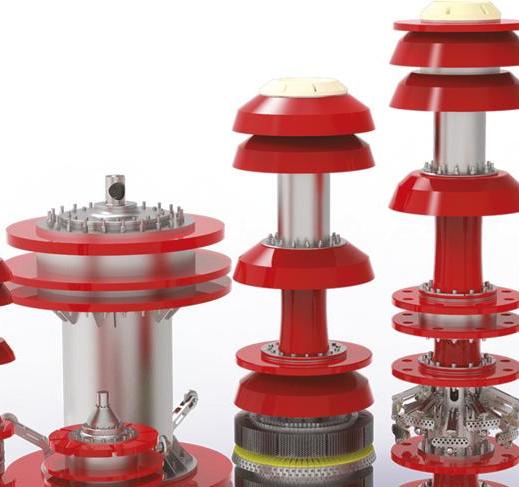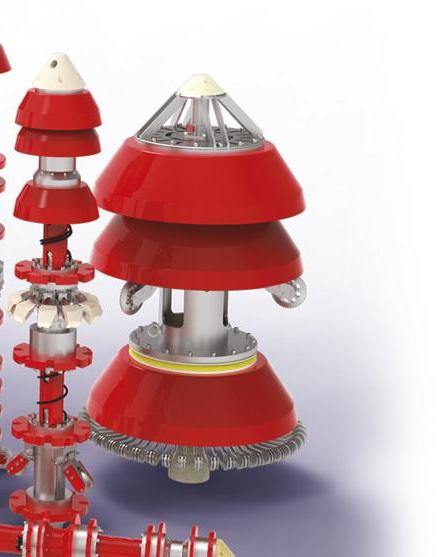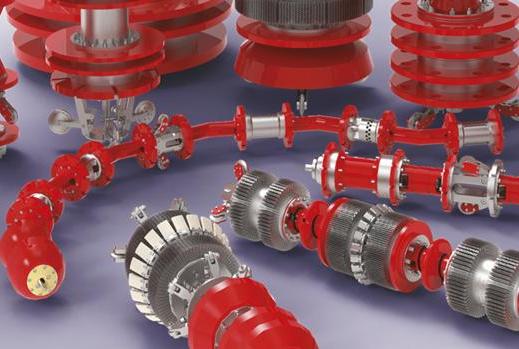
8 minute read
Mapping corrosion


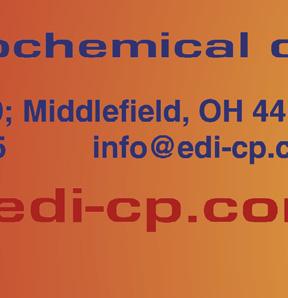



pipe installation enabled great progress in constructability, the current digital transformation that is underway enables strides to be made in efficiency and sustainability. From a design perspective, an engineer must balance the time that is available for a project with how much time is spent perfecting the design. Software can enable a paradigm shift in how these engineers spend their time. For example, by dramatically reducing the tasks of data mining, QC, data entry and model configuration that can consume the majority of the time spent on a project, the engineer is empowered to spend much more time engineering better outcomes during the design phase, including mitigating long term integrity risks.
Technical Toolboxes’ pipeline engineering software platform helps reduce risk, lower total cost of operations and accelerate project schedules. As pipeline engineering professionals embrace digital change, Technical Toolboxes’ legacy applications are evolving into sophisticated, integrated holistic analysis tools that enable users to make efficient, accurate decisions. The recently released Pipeline HUBPL platform which includes the HDD Power Tool (HDDPT) automates integration and analyses for insights into infrastructure design and operational fitness. It connects a library of engineering standards and tools to users’ data across a pipeline lifecycle. Integrated maps allow geospatial analysis, visual reconnaissance of existing databases and leveraging of disparate geographical information systems (GIS) data components.
Conclusion Advancements in machinery and instrumentation technologies were key in progressing constructability of pipelines in congested areas in the 20th century. In the 21st century, key advancements are being made for operability and long-term integrity as the industry develops improved knowledge bases and processes to address post-installation stress, coating damage, and other challenges that arise from the complex designs enabled by HDD. Each HDD installation should be uniquely designed and installed to specific site conditions, such that it will not present a pipeline integrity nightmare down the road and will keep hydrocarbons in the pipe. Sound engineering practices must be followed, and there are many complex engineering decisions to be made in the pre-planning, design, borehole stability analysis and adjusting on-the-fly during installation of the pipeline to make sure the HDD segment does not turn out to be a problem from a maintenance, corrosion control and an integrity (regulatory) point of view. The digital transformation that is underway in the industry can greatly improve safety and environmental stewardship. A key differentiator in successful digital transformations is the combination of people and processes with the technology, and software selection can greatly influence the outcome.
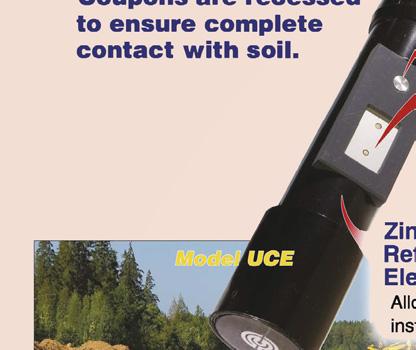


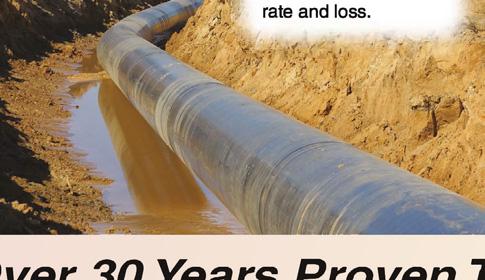




Lino Civardi, CEO of LK2, and Marc Rausch, Global BD Manager pre-insulated pipes/ DE market, Canusa CPS, detail how the company’s fully automated system for applying heat shrinkable sleeve technologies has been utilised on a project in the Czech Republic.


Heat shrinkable sleeve (HSS) technologies are the dominant field joint coating (FJC) selection in providing anti-corrosion and mechanical protection for oil and gas pipelines globally. Through focused development of innovative, high performance hot-melt adhesives and engineered outer layer backings, advanced field-applied HSS technologies offer equivalent and, in some cases enhanced coating protection compared to their factory-applied mainline coating counterparts. Today’s pipelines require seamless coating solutions along their entire length, with no compromise at the field joints. With advancements made in FJC materials, focus has more recently shifted to exert enhanced control over the coating process. Initially, this has come in the form of pre-project testing to qualify the proposed coating materials and installation process in advance of pipeline construction and coating activities.
Pre-project considerations are focused on the planning and preparation of project-specific coating application procedures, inspection and test plans, quality control programmes, and comprehensive training programmes for coating applicators. Pre-construction coating trials are also completed to confirm

Figure 1. Automating heat shrink sleeve application during pipeline construction using induction pre-heating (right) and IntelliCOATTM (left).
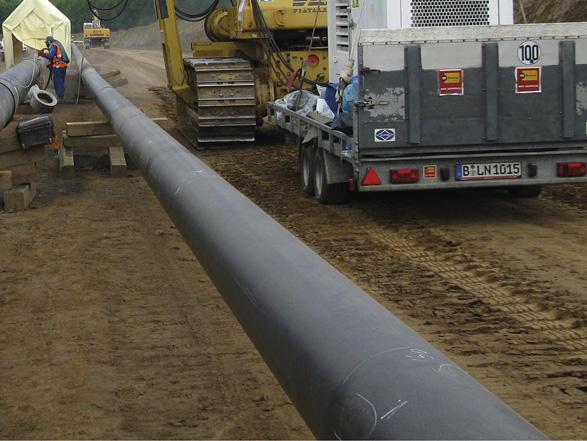
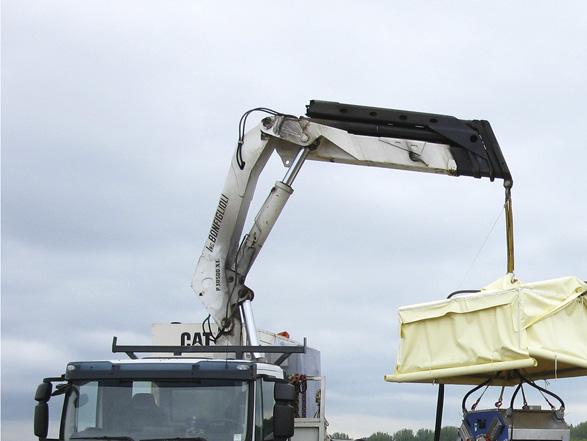
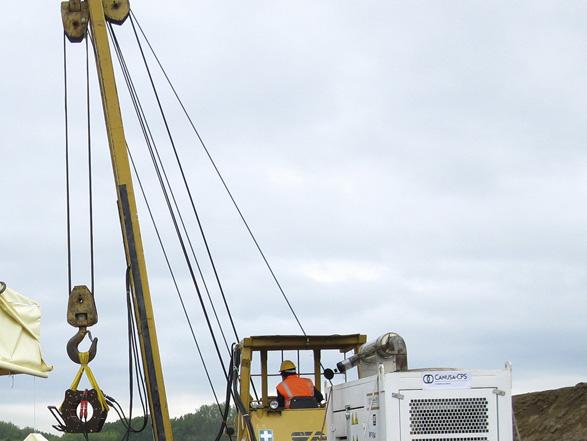

compliance to project specifications and demonstration of readiness to commence operations. Combined implementation of preproject and pre-construction testing has helped to create optimal conditions for quality and repeatability within the FJC process. However, within a demanding environment that necessitates the pursuit of continuous improvement, efforts to advance FJC materials and processes have not stopped there.
Automating application of HSS The world’s first fully automated system to control the application of HSS was first introduced in early 2011. IntelliCOATTM is a fieldfriendly system that provides a step change enhancement in the quality, consistency, and productivity of field-applied coatings by means of automation. Coupled with readily available 3-layer polyolefin heat shrinkable sleeve technologies offering the same level of protection as their factory coating counterparts, the automated system enables the application of a ‘factory-grade’ joint coating solution in a simple-to-operate format that is easily adaptable for an onshore pipeline right-of-way, spoolbase coating line or offshore construction pipelay vessel.
The patent protected system consists of a programmable logic controller (PLC) equipped control panel and a clamshell style infrared heating coil connected by rugged ‘plug-and-play’ umbilical cables. One control panel can operate a range of standardised heating coil sizes to suit pipeline diameters from 4 - 56 in. Application cycles can be initiated directly from the control panel or by using the remote control connected to the heating coil. Operators simply monitor cycle progress and remove the coil from the field joint at the end of the coating cycle – the IntelliCOAT® control system does the rest.
A major benefit of the IntelliCOAT system is that the requirement of open gas torch flames for installing the FJC is eliminated, therefore increasing operator safety in the FJC station, and even more so in particularly tight working quarters where space can be limited. Best practice installation techniques are automated through the IntelliCOAT system to produce high quality FJC applications that are fully repeatable from joint to joint. Installation programmes can be developed in advance of project deployment to meet specific project needs and can be qualified through comprehensive test programmes well in advance of pipeline construction activities. All installation parameters are tightly controlled and replicated throughout the duration of the project, just as they were during the qualification phase.
Precise control of the application process is managed by a PLC based control system with closed-loop feedback. Once the application programme is installed and approved, operators simply lower the IntelliCOAT coil onto the pre-positioned HSS, and the system takes care of the rest. That ensures that the same topquality result achieved during the first application of the day is the same as the result achieved at the end of the day.
When called into action, the heating coil’s instantaneous response delivers intense heat to the centre of the joint to begin the FJC application cycle. At the end of the cycle, the heating coil quickly dissipates heat, making the system safe to lift off of the pipe surface to transport to the next joint or to prepare for the next installation sequence. Only standard personal protective equipment is required.
IntelliCOAT is designed to have few moving parts and few consumable/wear items to maintain or replace over the course of a project. The system is suitably equipped for operation in the harshest of environments with ambient temperatures ranging from below -30˚C to 55˚C and can withstand the rugged handling associated with onshore and offshore pipeline construction. Individual components are standardised across the IntelliCOAT family of equipment, so any spare parts can be quickly substituted in a plug-and-play fashion in the unlikely event that repairs are needed. The robust design of the IntelliCOAT system ensures maximum uptime and productivity while minimising risk for the construction contractor.

Figure 2. IntelliCOAT with clamshell design preparing to wrap around a large diameter pipeline.
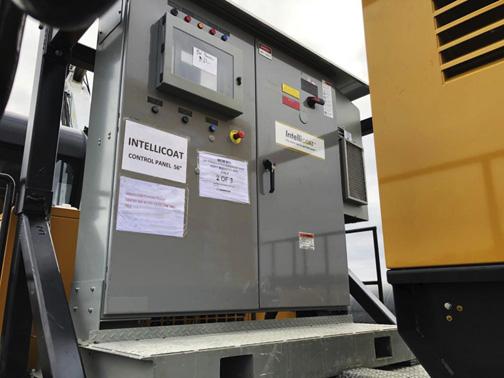
Figure 3. IntelliCOAT Control Panel equipped with PLC and touchscreen interface.
